Empowered
Places and Things > Sanctuaries > Adi
Da Samrajashram > History

A
Brief Description and History of Naitauba
Martin
Goulding
 |
| Martin
Goulding first became a formal devotee of Adi Da Samraj in 1984. He has a
passion for history, culture and the spiritual process. |  |
 |
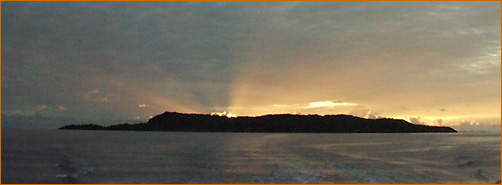
| I am desirous to climb the heights of Laucala
[1]
That I may see thence the island of Naitaumba,
Floating
apparently like a canoe on the Bright water. Author unknown
from
Transactions of the Ninth International
Congress of Orientalists, 1893 |
Introduction
| | |
| | |
| | Naitauba
is pronounced “Ny-tum-ba”. It has been spelled in various ways in the past, including:
Naitaba, Naitaumba, Naitamba, Neita-oumba [2]. The
island is part of the Northern Lau Group of the Fijian Islands. It is a volcanic
and raised limestone island, with a high point (named Padavara Loka by Adi Da)
of 186 metres (610 feet) [3]. It was recently estimated
to be 2000 acres (just
over three square miles) in size. Naitauba is almost completely enclosed
by reef (see the high altitude photograph above). Certain sections of ocean within
the reef are kept as a marine park, restricting fishing and hunting. The island
has both cultivated areas and virgin forest. |
| | |
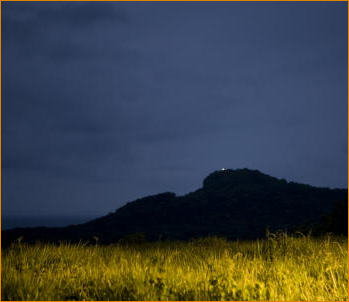
Padavara
Loka, the highest point on Naitauba
viewed from The Outshining Brightness

the
Lau Group of Fijian islands
|
Early
History
Not much information is available about the history of Naitauba
prior to the European settlement of Fiji's Lau Archipelago. (The British explorer
James Cook reached Vatoa Island in 1774.)
Some commentators are of the opinion
that fresh water would have been an issue on such islands (which have no "above
ground" water) and would have prevented a permanent settlement by Fijians.
Nonetheless,
when Captain William Bligh (infamously associated with "the Mutiny on the
Bounty") and eighteen of his crew sailed past Naitauba in 1789 (in a small
launch, in which they had been set adrift from the Bounty by their mutinous crewmates),
it is recorded that they:
They
didn't stop, because they had no weapons to defend themselves.

Captain
Bligh and those eighteen men who remained loyal
to Bligh being set adrift by
the mutineers on the Bounty

Bligh's 47 day voyage after being set adrift: from Tonga to East Timor, passing Naitauba early on
Bligh's
47 day voyage after being set adrift: from Tonga to East Timor, passing Naitauba
early on
(click picture for enlargement)
William Hennings
(1862-1877)
The first reliable record of a European owner of Naituaba
was of William Hennings, the German Consul to Fiji [13],
and at times, a successful copra trader.[5] Hennings
also was married to Adi Mere Tuisalalaa, a Fijian woman of title. Several Fijian
islands — including Mago and Naitauba — were sold to Hennings by Tui
Cakau in 1862.[11] (Tui" is Fijian for "Chief".
"Tui Cakau" is a title for whomever is currently the Paramount Chief
of Cakaudrove Province in Fiji.[12])
Walter
and Herbert Chamberlain (1877-1899)
The brothers Walter and Herbert
Chamberlain, uncles of Prime Minister Neville Chamberlain, and a pair of British
adventurers and entrepreneurs, bought the island of Naitauba from Hennings in
1877, for £7,250. In 1899, they sold it back to Hennings at a loss (£4,000), after
deeming it an unprofitable enterprise.
From diary notes recorded during
a visit to Naitauba by the brothers in 1881:
| Cleared much Jungle, planted many thousands
of cocoanuts and 300 ac. of South Sea cotton, the proceeds about paying the costs.
Then, as the government regulations enormously increased the expenses of labour
and we deemed it hopeless as a paying proposition under vicarious management,
we sold it in July 1899. [4] |
The
Hennings Family (1899-1965)
William Henning's son, Ratu Gustavus Mara
Hennings (the Fijian “Ratu” title goes back to his link to Fijian royalty on his
mother's side), took over from him, and continued to develop Naitauba as a plantation.
The Hennings ran a cotton farm on Naitauba. Under their stewardship, Naitauba
became mainly copra producing, known for good labour relations and described as
“a model plantation”.[4] (Copra is the dried meat, or
kernel, of the coconut. Coconut oil is traditionally extracted by grating or grinding
copra, then boiling it in water.)
Raymond Burr (1965-1983)
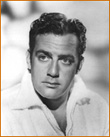 The
well-known television actor, Raymond Burr, and his long time partner Robert Benevides,
bought Naitauba from Elizabeth Hennings (wife of Ratu Gustavus Mara Hennings,
who had died in 1955) [6]. The pair further developed
the plantation, including building many wooden structures and introducing cattle.
Burr had a great passion for orchids and grew many varieties on the island.
The
well-known television actor, Raymond Burr, and his long time partner Robert Benevides,
bought Naitauba from Elizabeth Hennings (wife of Ratu Gustavus Mara Hennings,
who had died in 1955) [6]. The pair further developed
the plantation, including building many wooden structures and introducing cattle.
Burr had a great passion for orchids and grew many varieties on the island.
Burr
was a noted philanthropist and helped the Fijian residents on Naitauba, providing
employment and (among other things) sponsoring several Island children to be educated
in the United States. Burr himself always referred to the island as “Naitamba”.
His biographer noted, “All religions are respected with dignity on Naitamba” [7].
Adidam (1983 - present)
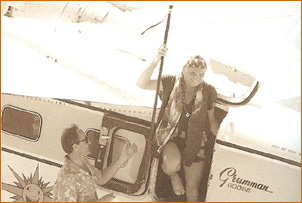
Adi
Da first setting foot on Naitauba, October 27, 1983
Adi Da had specifically
been looking for a place where He could do His Spiritual work with devotees and
with the world, that was completely set apart from the ordinary world and its
non-spiritual preoccupations. In 1983, Naitauba was acquired for Adidam [8],
primarily financed by one patron devotee. Adi Da landed by seaplane, and first
set foot on Naitauba on October 27, 1983. The next day, He spoke about the island
in Spiritual terms:
| Naitauba is not just a piece of land. It
is a Divine Place. That is how it will be for as long as the sun shines and rises
and sets and the grass grows and the wind blows. Forever — as ever as there
can be in this world. Maybe it will become a paradise through Spiritual sacrifice.
And, all during that epoch, this Place should be a Sanctuary of Blessing. Over
time, then, millions of people — literally, millions of people — should
come to this Place and be Blessed. They should come and acknowledge, affirm, and
see My Revelation magnified. This place is so great, so great. Civilization has
never interfered with it. It is untouched. The water is blue. The fish are happy.
Untouched, really untouched. Pristine from the beginning of the world —
this place. It has been waiting here since the beginning of time. Avatar
Adi Da Samraj, October 28, 1983
from Carolyn Lee, Adi
Da, The Promised God-Man Is Here |
Under
the custodianship of Adi Da Samraj, Naitauba was slowly transformed into a Hermitage
Ashram (formally named "Adi Da Samrajashram"), with some similarities
to the Indian model, yet uniquely reflecting the emerging Transcendental Spiritual
Way of Adidam. (For more about the Hermitages and Sanctuaries of Adidam, click
here.) Adi Da has created many Spiritually potent holy sites on Naitauba.
Emphasis for devotees living on Naitauba is on a disciplined and happy life of
devotion, service, and meditative practice.
The conservation of the island flora, fauna,
and reef was a priority from the beginning of Adidam's acquisition
of the island. A report into the health of the reef (named
“The Garland of Whales” by Adi Da [14])
was undertaken in 1986 [9]. The
necessity of supplying food to the residents of the island
in a self-sufficient manner shifted the plantation model into
that of an organic farm. (Click
here for much more.) In the late 1980’s, Bill Mollison,
one of the founders of permaculture [10],
was invited to Naituaba to research and advise Adidam on
the development of this practice. A constant weed eradication
program continues. Many thousand of the coconut trees have
been removed as they become unclimbable (and therefore unusable)
and a hazard to human beings. Similarly, over the years,
some of the cattle that Raymond Burr introduced have been
sold.

the
organic garden where many of Naitauba's vegetables are grown
(click picture
for enlargement)
Cooperative association between devotees
and the indigenous residents of the Fijian village of Ciqomi (thing-GO-mee) on
Naitauba was an imperative from the beginning. Finiasi Cakacaka, a Fijian resident
of Naitauba while Raymond Burr still owned Naitauba, who continues to be a resident
of Naitauba right up to the present, reminisced, on the first anniversary of Adi
Da's Divine Mahasamadhi (November
28, 2009):
 Finiasi Cakacaka Finiasi Cakacaka |
We
liked Raymond Burr very much, because he brought new things to the island. He
brought the movies . . . Before, we had never watched movies! When Raymond Burr
came, the [movie] screen was on the ground in the [village] square. So we sat
on the ground and watched the movies. Raymond Burr came to us one day,
and he told us, "I'm going to sell this island, Naitauba." He told us,
"A lot of buyers came to me, who want to buy the island. One Australian millionaire
brought the money with him to buy Naitauba. But I said, no." "I'm
only going to sell this island to people who will help you [the Fijian residents]." |
And
so it was on the understanding by Raymond Burr that Adi Da was a holy man, who
had great respect for the Fijian people, and who would care for the residents
of Ciqomi as Burr himself had, that Burr finally gave his consent to sell Naitauba
to Adidam.
On December 30, 1983, the residents of Ciqomi invited
Avatar Adi Da to a celebration in His honor, held in Ciqomi. Several days before
the celebration, two of the elders of the Fijian village had come to make a traditional
offering of kava to Avatar Adi Da, approaching Him in the traditional manner,
and inviting Him to Bless their village with His Presence. They addressed Him,
in Fijian, as "Dau Loloma" (meaning "The Adept of Love"), recognizing Him as a
holy man.
Even though the village of Ciqomi is completely independent
of Adidam, over the years, many Ciqomi residents have worked for Adidam on projects
from new building infrastructure to developing the extensive gardens. For its
part, Adidam supports Ciqomi village in many ways, including employment, school
scholarships, health clinic service, transport, water supply and sanitation.

Adi
Da, devotees, and Fijian residents regularly held
celebrations together during
Adi Da's lifetime

*
* *
Naitauba remains a place of pilgrimage and spiritual retreat
for devotees of Adi Da Samraj. It continues solely on the sponsorship of members
and friends of Adidam [15] [14],
as a place of personal and spiritual sacrifice. The intention of all devotees
of Adi Da is to protect and preserve this Island Sanctuary as an esoteric and
conservation treasure of humanity, in perpetuity.
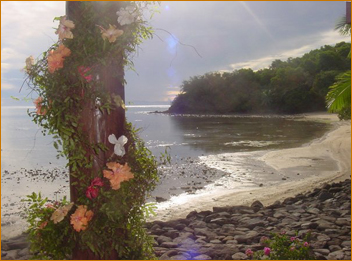
Beach
near Aham Da Asmi Sthan
(click for enlargement)
RETURN
TO "ADI DA SAMRAJASHRAM"
|
|
| |
 FOOTNOTES
FOOTNOTES
 |
|
|
|
|
|
|
|
|
|
|
|
|
|
|
|
, |
|
|
|
|
|
|
|
, |
|
|
|
|
|
|
|
, |
|
|
|
|
|
|
|
|
|
|
|
|
|
|
|
, |
|
|
|
|
|
|
|
|
|
|
|
|
|
|
|
|
|
|
|
|
|
|
|
|
|
|
|
|
|
|
|
|
|
|
|
|
|
|
|
|
|
|
|
|
|
|
|
|
|
|
|
|
|
|
|
|
|
|
|


186,104 people have liked our site's pages and shared them with their Facebook friends - Most Shared Pages
© 2024 Copyrighted materials used with the permission of The Avataric Samrajya of Adidam Pty Ltd, as trustee for The Avataric Samrajya of Adidam. All rights reserved. None of these materials may be disseminated or otherwise used for any non-personal purpose without the prior agreement of the copyright owner. ADIDAM is a trademark of The Avataric Samrajya of Adidam Pty Ltd, as Trustee for the Avataric Samrajya of Adidam.
Technical problems with our site? Let our webmaster know.